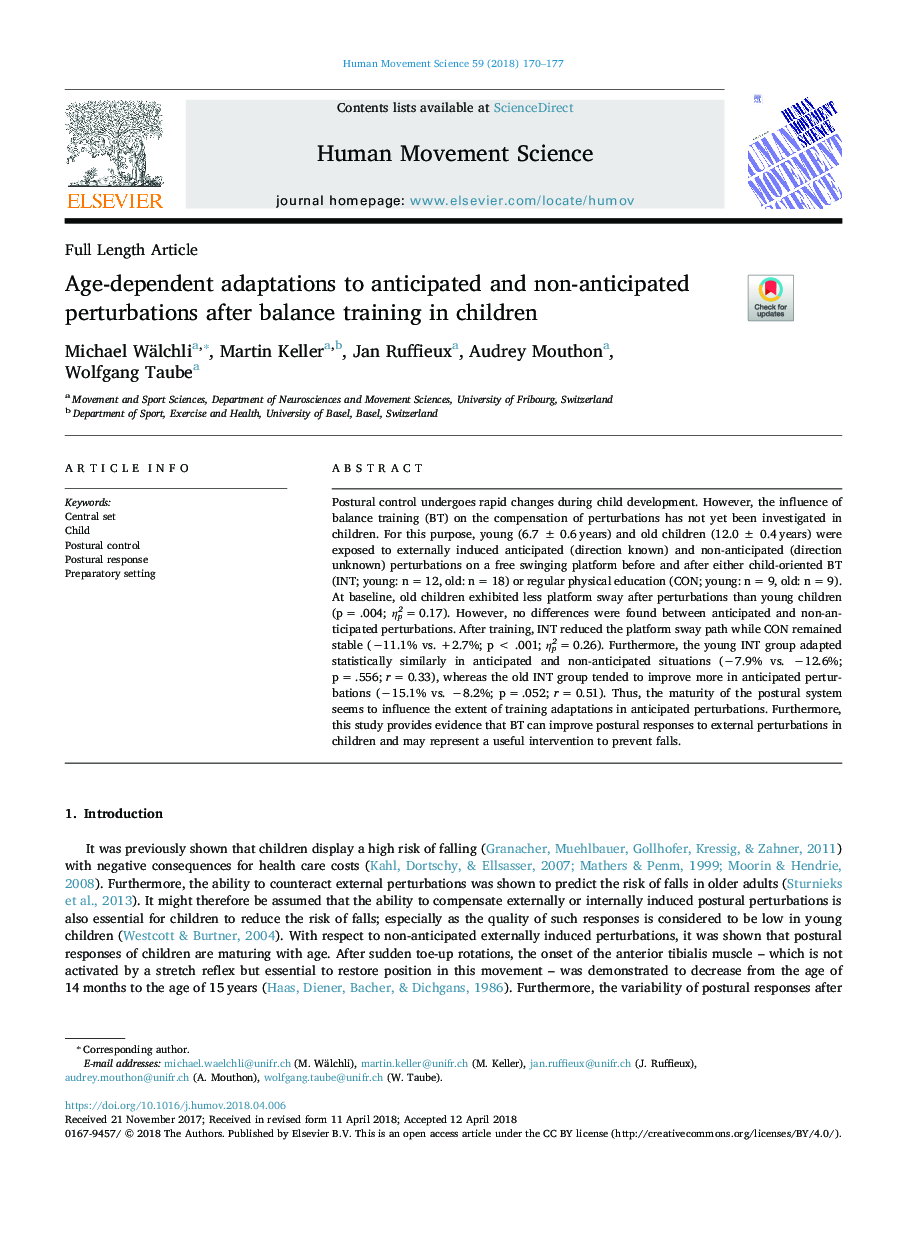| Article ID | Journal | Published Year | Pages | File Type |
|---|---|---|---|---|
| 7290902 | Human Movement Science | 2018 | 8 Pages |
Abstract
Postural control undergoes rapid changes during child development. However, the influence of balance training (BT) on the compensation of perturbations has not yet been investigated in children. For this purpose, young (6.7â¯Â±â¯0.6â¯years) and old children (12.0â¯Â±â¯0.4â¯years) were exposed to externally induced anticipated (direction known) and non-anticipated (direction unknown) perturbations on a free swinging platform before and after either child-oriented BT (INT; young: nâ¯=â¯12, old: nâ¯=â¯18) or regular physical education (CON; young: nâ¯=â¯9, old: nâ¯=â¯9). At baseline, old children exhibited less platform sway after perturbations than young children (pâ¯=â¯.004; η2pâ¯=â¯0.17). However, no differences were found between anticipated and non-anticipated perturbations. After training, INT reduced the platform sway path while CON remained stable (â11.1% vs. +2.7%; pâ¯<â¯.001; η2pâ¯=â¯0.26). Furthermore, the young INT group adapted statistically similarly in anticipated and non-anticipated situations (â7.9% vs. â12.6%; pâ¯=â¯.556; râ¯=â¯0.33), whereas the old INT group tended to improve more in anticipated perturbations (â15.1% vs. â8.2%; pâ¯=â¯.052; râ¯=â¯0.51). Thus, the maturity of the postural system seems to influence the extent of training adaptations in anticipated perturbations. Furthermore, this study provides evidence that BT can improve postural responses to external perturbations in children and may represent a useful intervention to prevent falls.
Related Topics
Life Sciences
Neuroscience
Cognitive Neuroscience
Authors
Michael Wälchli, Martin Keller, Jan Ruffieux, Audrey Mouthon, Wolfgang Taube,
